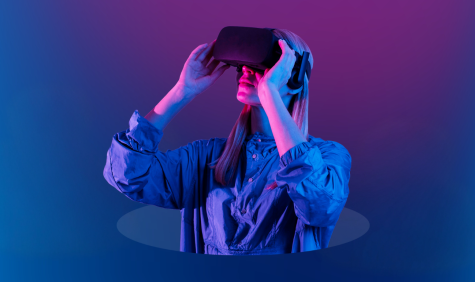"The PoC demonstrates how XR and large language models can transform research. The ability to interact with 3D cultural objects and receive instant insights creates exciting opportunities for both academic collaboration and education"
SURF develops immersive research environment for cultural heritage
Within the Digital Realities initiative, SURF developed a proof of concept (PoC) that allows users - whether researchers, students, or educators - to engage with 3D cultural objects in real time, receiving in-depth, context-rich responses.
Bringing history to life
Picture examining a centuries-old sculpture and simply asking, “What’s the historical significance of this piece?”. Within moments, you receive in-depth insights via text or audio, offering insights into art history, archaeology, or anthropology and enhancing your learning process with a hands-on feel that traditional methods can’t match. It’s all possible in the environment, which supports both English and Dutch, making cross-cultural studies accessible and seamless.
How it works: a technological feat
The immersive environment integrates XR tools, speech-to-text technology, and high-performance computing to make interactions smooth and meaningful. When a user asks a question, it’s processed and matched with object data, then transformed into an answer by SURF’s language model platform. This response can appear on-screen or as audio, providing an experience that feels intuitive and engaging.
The environment is powered by high-performance computing, enabling it to handle massive cultural heritage datasets and complex 3D models effortlessly. This means that as the database of cultural objects grows, the environment remains fast and responsive, ensuring that users can keep exploring without delay.
Resource for collaboration and research
The possibilities for this research tool extend beyond individual study. Academics from various fields and countries can explore artifacts together in real-time, sharing insights and perspectives. Soon, universities and research groups will even be able to upload their own datasets, turning the environment into a hub for collaborative projects across disciplines and borders.
At events like SURF National XR Day, the Erasmus Data Summit, and the event ‘Why Cultural Heritage does not make us cry yet?’ hosted at the Dutch National Royal Library, the possibilities gained positive attention from academics, researchers and educators. They see it as a way to bypass traditional, text-heavy analysis, favoring a more immediate, interactive approach to understanding historical contexts.
Looking ahead: a platform for broader public engagement
As SURF continues to enhance the Digital Realities environment, new features are on the horizon, including multi-user options for live collaboration. Imagine a historian in the Netherlands and an archaeologist in Italy examining the same artifact together, discussing its significance in real-time.
Additionally, users will soon be able to upload their own objects to the environment. This could be a game-changer for museums and academic institutions with large but often hard-to-access collections. By digitizing their artifacts, these institutions can share them with a much broader audience, helping to deepen public appreciation and understanding of cultural heritage.
More information?
Do you want more information? Get in touch.
